What We’re Reading: Spring Round Up
 Spring is a time of reawakening, thawing, and…new books! Problem is, I can’t keep up with all the books coming out this spring that I’m excited about. This post is an effort to round up a small sampling of the many books I’m looking forward to this season (along with warmer weather and sunshine). You may see some of these featured more closely on the blog in coming months; but for now, let’s eagerly get a glimpse of what publishers have to offer and plot our spring reading lists!
Spring is a time of reawakening, thawing, and…new books! Problem is, I can’t keep up with all the books coming out this spring that I’m excited about. This post is an effort to round up a small sampling of the many books I’m looking forward to this season (along with warmer weather and sunshine). You may see some of these featured more closely on the blog in coming months; but for now, let’s eagerly get a glimpse of what publishers have to offer and plot our spring reading lists!
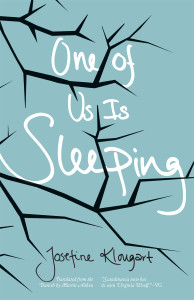 One of Us is Sleeping by Josefine Klougart (Open Letter)
One of Us is Sleeping by Josefine Klougart (Open Letter)
This is an English translation debut for well-known contemporary Danish writer Klougart. Translated by Martin Aitken, this novel has already won awards on the other side of the ocean for its story of loss. Our narrator experiences loss of multiple shades: loss over the end of a romance, her mother dying of cancer, and over the distance between childhood and adulthood. Klougart’s writing has been lauded for it’s poetic nature, which drew my interest, of course. Kougart’s writing has been compared to Virginia Woolf and Anne Carson. I’m eager to dig into this honest novel.
 Everything I Found on the Beach by Cynan Jones (Coffee House Press)
Everything I Found on the Beach by Cynan Jones (Coffee House Press)
I reviewed Cynan Jones’ first Coffee House Press-published book, The Dig, last spring. Raw, abrasive, and compact, Jones’ short novels carry a muscular, confident tone. He’s been oft described as similar to Cormac McCarthy. This new story follows a handful of diverse characters on a quest to better their lives through a questionable combination of cocaine and sea. Don’t expect an easy ending or a light read; rather, expect to work your literary chops with Jones’ gritty, unexpected writing style.
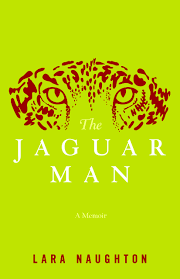 The Jaguar Man by Lara Naughton (Central Recovery Press)
The Jaguar Man by Lara Naughton (Central Recovery Press)
A memoir, The Jaguar Man follows author Lara Naughton’s story of healing after her traumatic experience of being kidnapped, held captive, and raped in Belize. Writing a memoir about a horrific experience such as Naughton’s can be a challenge to read (let alone write). However, it seems like Naughton has figured out the right combination to make this a unique memoir approach. The back cover blurb from the publisher sums it up best with: “What she comes to is authentic, unorthodox, and fresh, and could serve as a groundbreaking path for trauma survivors to find their own peace and healing.” Authentic, unorthodox, fresh? These sounds like the three best ingredients for a difficult memoir to me. Count me in.
What books are you looking forward to this spring?
What We’re Reading: Fall Book Preview
 The weather is hinting at autumn here in Minnesota…we’ve had a slew of cooler temperature days with fall-colored skies. While I’m still a little in denial about the end of summer, I’m not-so-secretly looking forward to my favorite season. Fall is the season where I cut back on my social butterfly schedule, and take deep joy in staying home in sweatpants with my cat and a book. Here are a few books I’m looking forward to reading this fall.
The weather is hinting at autumn here in Minnesota…we’ve had a slew of cooler temperature days with fall-colored skies. While I’m still a little in denial about the end of summer, I’m not-so-secretly looking forward to my favorite season. Fall is the season where I cut back on my social butterfly schedule, and take deep joy in staying home in sweatpants with my cat and a book. Here are a few books I’m looking forward to reading this fall.
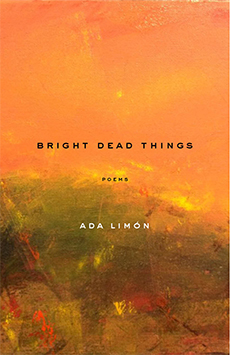 Bright Dead Things by Ada Limón (Milkweed Editions, September)
Bright Dead Things by Ada Limón (Milkweed Editions, September)
You’ll see a review soon of this gem. It’s one that I’ve already read multiple times since receiving the review copy. My love of Ada Limón is well documented (previous review here), and Bright Dead Things only makes me fall deeper in love with her writing. The poems examine the human heart through loss of a close loved one, moving from New York City to Kentucky, and love. It’s contemplative, proud, and heartaching, all wrapped up in Limón’s delectable command of language.
The Story of My Teeth by Valeria Luiselli (Coffee House Press, September)
There’s already a lot of buzz about this book; folks are saying Luiselli pulls you into the weird world of the main character, Highway, and his collection of famous teeth. Both Luiselli and Highway are master storytellers, creating a space that is unlike any other, and hard to shake once you’ve entered.
The Walls by Matthew Henriksen (Black Ocean, Fall 2015)
I enjoyed Henriksen’s Ordinary Sun collection (brief review here), and am looking forward to this upcoming collection. His poems teem with honesty and imagistic wonder, both of which I gravitate towards. I haven’t heard much about this collection at all, which makes me all the more curious to see what Henriksen comes up with.
 Cat is Art Spelled Wrong by Caroline Casey, Chris Fischbach, and Sarah Schultz (Coffee House Press, September)
Cat is Art Spelled Wrong by Caroline Casey, Chris Fischbach, and Sarah Schultz (Coffee House Press, September)
Speaking of cats, I went to the CatVidFest recently, a participant of this internet-age phenomena of YouTube, cat humor, and community. Coffee House Press is devoted to exploring our contemporary world, and this collection of essays from 14 different writers will get you thinking about our society and it’s identity.
What books are you eagerly anticipating this fall?

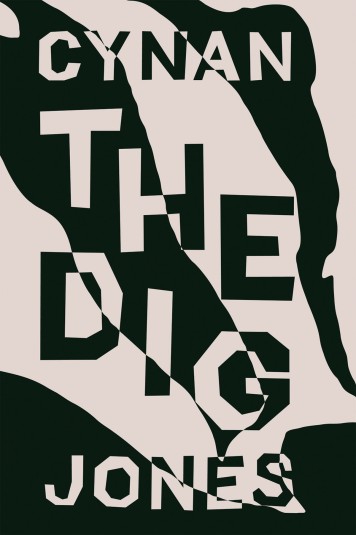 The Dig by Cynan Jones (Coffee House Press, U.S. Edition, 2015)
The Dig by Cynan Jones (Coffee House Press, U.S. Edition, 2015)
In keeping with my Coffee House Press theme this week (see my two part discussion with CHP publisher Chris Fischbach and independent curator Sarah Schultz here and here), I read one of their recent releases: The Dig. It’s a dark and raw book, powerful in its short novella format.
The Dig follows two men in the countryside of Wales, one of whom is unnamed, and the other is a sheep farmer named Daniel. Daniel is silently grieving the sudden and violent death of his wife, juxtaposed with new life as he cares for his growing flock of sheep during lambing season. The unnamed man is a brutish man, who makes his living baiting badgers who he then pits against dogs in viscous illegal betting fights. Their two seemingly separate worlds parallel until they slowly begin to veer towards each other for violent collision at the end.
Some of the themes (life, death, violence) can feel a bit heavy-handed at times, but Jones moves on with such confidence that one hardly notices. In a novella like this, the themes have to be a bit more obvious as there isn’t as much time to spend slowly developing them.
The Dig‘s brevity makes it quick to digest, also partially in thanks to the nicely timed pacing throughout. It’s a muscular book, tackling both the brutality and raw vulnerability of life without wincing. Other reviewers and the back panel of the book compare Jones’ writing to Cormac McCarthy, which is apt. His writing is direct and unflinching, but lingers when it needs to, and alternately attacks when it needs to. Jones can deftly move from violence to the most intimate of moments, such as this one with Daniel thinking about his deceased wife:
He sat on the bales and let his eyes go round the shed. The sheep shifted into new comforts under the rain but there was nothing doing. The new lamb was drinking. He wondered what sort of a mother she would have made. They had talked about it, were ready for it. He pushed the thought away.
The cat scuttled in out of the weather and rubbed itself on the bales then went into the corner and settled itself and he felt a quiet transfer of love for the cat. His eyes filled with tears. He looked at the cat and held back the tears and felt himself smile desperately. Oh God, he said. You were so good. It was so good to have you.
The cat came up and sat with him, and for a while they sat like that, in the comfortable sound of the rain, and the closeness of the cat was almost too much.
It’s almost jarring how easily Jones can switch over to the brutality of the other man. I won’t excerpt the most disturbing sections, but here’s a glimpse, as men are holding down the badger to prepare it to fight:
The man on its back had knelt hard on it while it struggled and grunted and humphed underneath him and he seemed to get something carnal and delicious from that. There was a steady buzz. There was a bloody smell in the room now.
In his author statement, Jones addresses how he can look at such brutality close up, but also keep from pushing the reader too far: “There is a difference between voyeurism and witness. Compassion was key in balancing the book.” And he’s right. Despite the wholly terrible nature of the unnamed man, we see a tiny glimpse of something close to compassion in his pride of his favorite dog, and the pleasure he gets from the success of his business. These are only small glimpses in a very dark portrait of the man, but they somehow are enough to keep us reading through the disgust at his actions. Daniel, too, has a few moments of uncharacteristic anger in his otherwise passive world. Through these tiny holes that deviate to prevent the characters from being too archetypal, we see the complexity and unpredictability of nature.
What advantages do you think the novella form offers writers? Are there other books you’ve read that have made you cringe, yet balanced it enough to keep you reading?

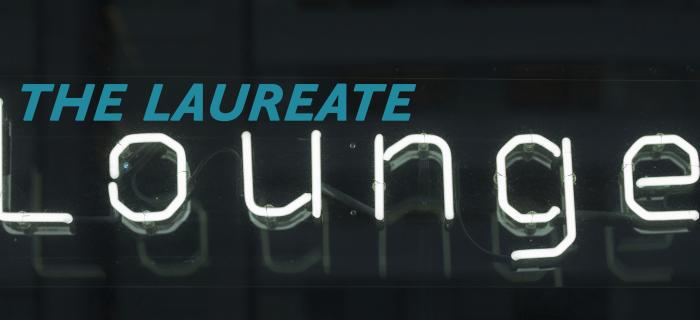 Editor’s note: This is part two of a discussion with between Wren and Coffee House Press publisher Chris Fischbach and independent curator Sarah Schultz about the changing arts ecosystem and their recent collaboration, The Laureate Lounge, with (and at) the American Swedish Institute (ASI). The Laureate Lounge is “an inventive space inspired by the real and imagined habits of Nobel Laureates” where participants dig into their own creativity by completing short exercises created by four writers and artists (Rachel Jendrzejewski, Janaki Ranpura, Sun Yung Shin, and Andy Sturdevant). The exhibit is part of the larger Nobel exhibit at ASI, and goes through May 24 (there is even a Cocktails at the Castle reception this Friday, if you are so inclined). You can find part one of this discussion here.
Editor’s note: This is part two of a discussion with between Wren and Coffee House Press publisher Chris Fischbach and independent curator Sarah Schultz about the changing arts ecosystem and their recent collaboration, The Laureate Lounge, with (and at) the American Swedish Institute (ASI). The Laureate Lounge is “an inventive space inspired by the real and imagined habits of Nobel Laureates” where participants dig into their own creativity by completing short exercises created by four writers and artists (Rachel Jendrzejewski, Janaki Ranpura, Sun Yung Shin, and Andy Sturdevant). The exhibit is part of the larger Nobel exhibit at ASI, and goes through May 24 (there is even a Cocktails at the Castle reception this Friday, if you are so inclined). You can find part one of this discussion here.
Hazel & Wren: Can you talk about some of the Laureate Lounge exercises please? (What are some of your favorites? What do you and the writers hope these will provoke for the audience? How are they “inspired by the real and imagined habits of Nobel Laureates”?)
Chris Fischbach: I think the key here is “imagined habits.” We knew we didn’t want to create an exhibit that people could just look at and think about. The dynamic of curators/artists/institutions being an “active” presenter to a “passive” audience is one that Sarah and I are both interested in shaking up, or turning on its head. So, we knew we wanted to create a space where writers could employ their talents to in turn create spaces for visitors to be creative.
So, we set up only a few restraints. The writers were tasked to create some kind of activity that included their writing, that was instructive, had something to do with the idea of “how to win a nobel prize,” and that encouraged activity that could be in the lounge itself, the rest of the castle, and/or the community at large.
Sarah worked with Janaki and Rachel to develop their projects. Because each of them work in the theater / social practice world, their projects took up much more space, employed props, and have a real physical presence in the lounge. Working with Andy and Sun Yung as Coffee House Press writers, we went a little more analog, and they each created a list of prompts/ instructions that were then put on postcards, which are on display / available in the lounge. You can fill them out there and take them, leave them, deliver them to others in the castle or elsewhere, or actually put them in the mail.
They include instructions like, from Andy:
- Read Knut Hamsun’s Hunger (or skim it) and try to determine which aspects of it could be used to justify dumping your college boyfriend or girlfriend.
- Choose an important email in your inbox that you must reply to soon. Write out the response by hand, then type it out. Ask if the recipient notices anything different afterwards.
And from Sun Yung:
- Walk up the stairs as though it’s the last staircase in your city. What memory appears with each step upward?
- Consider this quote from Toni Morrison: “As you enter positions of trust and power, dream a little before you think.” What positions of trust and power do you hold, and what new dreaming do you need to do?
Sarah Schultz: I won’t pick favorites. I love them all! Sun Yung and Andy’s postcards most directly tie to our initial idea for giving visitors tips and instructions for writing something in the vein of a Nobel Prize winner. Although, I will note that they come at task very poetically, politically and even abstractly. I love trying to figure out which writer Andy is referring to when he asks you to “Search your email, texts or chats, and see if you can find an instance of someone calling you “hysterical.’”
Rachel’s is a performer and playwright and her large elegant posters function like a set of stage directions for the audience. They have a wonderful presence in the gallery and the texts read like poems or scores inspired by the work of four women writers. Rachel and I spent a lot of time talking about who wasn’t well represented in the history of the prize, and wanted to find a way to emphasize the work and lives of some of the women who won.
Janaki Rampura’s projects are active and a little cheeky. It’s Not that Hard to Write a Book creates a step by step set of instructions inspired by particular Nobel Laureate works. All you have to do is type your answers on the cards and voila, you will become a published author. (And I love her instructions for Explosive Drawings that connect acts of imagination with the destructive power of dynamite. Without being heavy-handed, it might make you pause to consider the irony of so much financial and generous largess!
H&W: Do you see The Laureate Lounge existing in any other capacity after the end date at ASI?
CF: Maybe? To me the answer to this is largely abstract in that I hope it has some impact on visitors and on those people that participate in the activities. Meaning that I hope they think about the ASI differently, how one can interact with a text, the different ways of “writing,” and how literature and writing can activate not just a space like the Laureate Lounge, but a museum in general, and beyond.
SS: I feel like the project was specific to the context of the Nobel Creations exhibition. It would be interesting to talk with the artists about their experience and if it prompted any ideas that they wanted to continue with in future. I feel very confident that the American Swedish Institute will keep experimenting like this in the future.
H&W: What are some of the most exciting trends you are both seeing in arts organizations with audience engagement?
CF: I don’t know if it’s a trend or not, but I’ve been noticing and thinking a lot about the shifting hierarchy of value around professional and amateur artists. Meaning that it’s not necessarily that a professional opera singer is more valued that someone participating in a community sing-along.
I also am really enjoying anytime an artist gives any kind of tour. Of anything. To me, that’s an example of what I call art-ish. It might not be what most people thing of art, and it’s hard to measure its “excellence,” and that doesn’t matter. There is much less pressure when things are “art-ish.” Throwing traditional measures of success out the window.
SS: Arts and cultural organizations are experimenting with audience engagement in all kinds of ways. I love to see how humor and playfulness has infiltrated organizations in ways that complement and enhance their scholarly and educational missions. (For example, the Minneapolis Institute of Art has really knocked it out of the park with their 52 surprises to celebrate their 100th anniversary which included pop-up waltzes, ice sculptures and reproductions of beloved artworks around town.) Museums are also becoming more generous and inventive with how they use and share their collections and resources, as illustrated by what ASI has done with the Nobel exhibition. I would also highlight the institutional support for artists who work in socially-engaged, participatory and performative ways as a significant and growing trend. Most importantly, cultural institutions are getting very focused on realizing their social and civic potential. I think they are moving beyond easy definitions of participation and engagement and are trying to actively define how inclusion and equity can be part of their vocabulary, core values, and everyday work.
H&W: Is there a particular challenge to audience engagement that you’ve encountered, either within your own work, or observing other organizations at work? If so, what are your thoughts on how to tackle that challenge?
SS: The biggest challenge is to keep the needs and experiences of the audience at the forefront of your design. It’s easy to get seduced by your own cleverness or to overestimate and even underestimate your audience. As my former colleagues and I would say, “Let’s make it simple but not simple-minded.”
CF: One challenge is when cultural institutions that implement audience engagement programs think of it as an art of their marketing department, serving to reinforce and support traditional programming. Letting audience engagement shape the core is much more exciting to me, but it’s scary. Also, it’s important to remember that if you want to reach diverse audiences, you need to go out into the community—don’t expect them to some to you just because you invite them. Not everyone will always feel welcome. It’s up to the institutions to make themselves feel vulnerable.
H&W: Do you have any favorite arts organizations that you look to for inspiration when working on programming and/or audience engagement?
SS: I’m a big fan of what Chris is doing at Coffee House Press and of course the American Swedish Institute, Northern Lights, Works Progress, Bedlam Theater, the Plains Art Museum in Fargo, the new Can Can Wonderland and Public Art St. Paul with their City Artist in Residence program. There are so many individual artists in the Twin Cities I could name. In New York, I love to check out what is happening at Governor’s Island, the Queens Museum and of course Creative Time. The artist-run space Machine Project in LA, in fact, the whole city of Los Angeles is an inspiration. I just came from Open Engagement, an annual social practice art conference that was held in Pittsburgh and was blown away but what was happening in the city. I think we’re in the middle of a movement, not a trend!
CF: Open Field was huge for me, and everything Sarah and her team did at the Walker. I also love Machine Project in LA, Works Progress here in town, Northern Lights / Northern Spark, the ASI itself, Common Room (out of the Soap Factory, run by Andy Sturdevant and Sergio Vucci), Floating Library, the Library as Incubator Project, Proteus Gowanus in Brooklyn, Public Art St. Paul, Amanda Lovelee, Molly Balcom Raleigh, Ring-Ring Poetry, . . .
Editor’s Note: What movements and shifts in the arts world are you noticing? What other organizations do you look to for innovative programming?
(Pssst: It’s Online Open Mic day! Head over to leave feedback for our lovely writers.)





